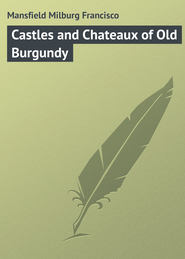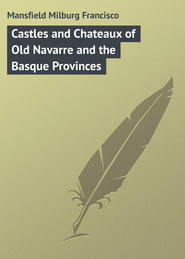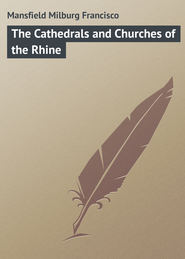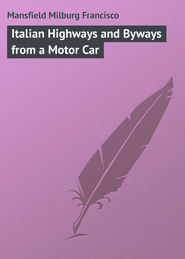По всем вопросам обращайтесь на: info@litportal.ru
(©) 2003-2024.
✖
In the Land of Mosques & Minarets
Настройки чтения
Размер шрифта
Высота строк
Поля
The mosque-marabout is practically a tiny house of worship, its four box-like walls surmounted by one great dome or others smaller, with never, never a minaret, the invariable adjunct of a full-grown mosque. The quaint, kindly welcome of the marabout of Algeria and Tunisia will long remain in the memory of those who have come under its influence, as did the author in the course of some months’ sojourn in a little desert oasis, peopled only by indigènes and the small garrison of a French military post. An excursion to visit the marabout in his humble dwelling, some kilometres away under another little clump of palm-trees, was an almost weekly occurrence. Conversation was difficult, but we all sat and looked at each other and made signs, and nodded, and clasped hands, and again nodded a farewell, the white-clad marabout’s kindly, bearded face lighting up meanwhile as if in appreciation of the glimmer of light from the outside world which had filtered through to his tranquil abode. Nothing ever more belied the words of a proverb than a marabout. The French have a remark in which he is made out an ugly, uncouth man: “Affreux comme un marabout.” The illustration herewith belies these words.
If you are a clergyman of the Christian church, and there are many “conducted tourists” of that order in Algeria to-day, you need have no hesitancy in making your profession of faith known to the marabout. Say simply that you are a “marabout d’Aïssa.” He will recognize and respect your religion, which is more than the Confucian or Buddhist will, who simply rolls his tongue in his cheek and smiles blandly. The Mohammedan’s religion is a very plausible and a very well-working one. He has no false gods or idols. That’s a good thing of itself. And superstition plays a very small part therein. That’s another good thing. The marabout is not a Mussulman priest, but a member, merely, of a religious order, – a monk virtually, and, as there are communities of monkish orders elsewhere, there are also whole tribes in Africa composed entirely of marabouts. They are looked up to by the Mussulman faithful as shepherds of the flock in the absence of a specially credentialled priest or father.
The marabouts are most numerous in Morocco, Algeria and Tunisia, though their vocation properly belongs to the entire Mussulman religion.
A whole tribe of the sect of marabouts, under the pretext of wishing to be free to practise their rites away from worldly contaminating influences, voluntarily exiled themselves centuries ago in the Atlas range bordering the northern limits of the Sahara. This was in 1050. From this procedure these religionists grew to such power and influence that they became virtually political rulers as well. They conquered the kingdoms of Fez and Morocco, and even sought to conquer Spain, emigrating to the southern peninsula in vast numbers, only to be chased from there to seek a refuge in Majorca, which they were able to do because of the bounty of the Mussulman King of Cordova, to whom the suzerainty belonged. Here they were known under the name of Almoravides, and to them was due the invention of the Spanish money known as maravédis.
The marabout is caricatured a little, too, in the name given to a fat-bellied copper coffee-pot frequently met with in the Mediterranean countries. Balzac describes the batterie de cuisine of one of his characters as consisting of un chaudron, un gril, une casserole et trois marabouts.
One of the greatest Mussulman saints, and the one who is the most frequently invoked, was Sidi-el-Hadji-Abd-el-Kader-el-Djilali. His tomb is at Bagdad, but all Algeria is strewn with koubas in his honour. He is particularly the patron saint of the blind, but the lame and the halt invoke his aid as well, for he has the reputation of being the most potent and efficacious of all Mussulman saints. A marabout is generally in charge of these koubas, as he is with the proper tombs of other holy men. The marabout tombs, the koubas and the mosques are all Mussulman shrines of the same rank so far as their being holy, sanctified places is concerned.
The pilgrimage to Mecca from all Mohammedan lands is the event of their lives for the faithful who participate therein. The pilgrims going from Algeria and Tunisia are yearly becoming greater in numbers. It is as queer a composite caravan as one has ever seen which lines up at the wharves of Bona or Sfax, there to take ship for the East. By this time it has ceased to be a caravan, and has become a personally conducted excursion. The return is quite as impressive as the departure. It is then that a sort of cantata is sung or chanted, running something like the following: —
First the waiting folk on shore shout out, —
Then the pilgrims reply: —
“O pilgrims from the house of God
Hast thou seen the Prophet of God.”
Then the pilgrims reply: —
“We have seen! We have seen!
And we have left him in the House of God:
There he makes his devotions,
There he reads his holy books.”
The marabouts then endorse it all, —
“Our Seigneur Abraham is the beloved of God,
Our Seigneur Moses is the mouthpiece of God,
Our Seigneur Aïssa[1 - The name the Arabs give Jesus Christ.] is the spirit of God,
But our Seigneur Mohammed is the Prophet of God.”
The memory of a Mussulman who has departed this life is not put lightly aside with the rising of the next day’s sun, but a real devotion, if a silent one, goes out towards the departed for many months, and perhaps years, after his corpse is first laid out on its mat of straw in the courtyard of his domicile or before his tent.
At this moment the vague, rigid form compels the devotion of all who were near and dear to him in life. In soft cadence they bewail his death, and prayers of the utmost fervour are sent upward on his behalf. All is calm, solemn, and well-ordered, there is no hysterical excitement, no wailing clamour, and no jealous quarrellings among the heirs.
Above all others one voice cries out a sad voluminous chant. It is the “Borda,” the funeral elegy of a departed soul.
An Arab funeral is a solemn affair, though not necessarily imposing. A little group of indeterminate numbers lead off, then four others carrying a litter, covered with a flowing white cloth, on their shoulders. All this is usually in the first hour after sunrise. On a little plateau of desert sand, just above the deep-dug grave, the corpse is finally placed, the company ranged about in a semicircle for one last, long, lingering prayer. The face of the corpse is turned always towards the holy city, Mecca, and when the body has been lowered into its eternal sandy cradle, and covered with a layer of sun-baked clay, and then more sand, three tiny palms are planted above. They soon wither and die, or they live, accordingly as chance favours or not, but the thing is that they be planted.
This is the end; nothing remains but for the women to come along after a decent interval and weep, never by any chance missing a Friday.
CHAPTER VI
ARCHITECTURE OF THE MOSQUES
GOTHIC architecture is expressive of much that a mixed or transitory style lacks, but again the Roman, or Lombard, or the later architecture of the Renaissance, have their own particular cachet quite as recognizable and quite as well defined.
Mohammedan architecture, so different in motif and treatment, is quite as expressive and, in many ways, quite as civilized as the architectural forms of Europe, and possesses in addition a certain feeling which baked clay and plaster suggests better than all other materials. A feeling which is often entirely wanting in cut stone when used to reproduce animal and plant forms.
Saracenic, Assyrian, Persian and Byzantine architectural details are all of them beautiful, if bizarre, but the Mohammedan architecture of the Moors outranks them all for sheer appeal, fantastic and less consistent though it be. Fantastic it is, but often in a simple, suggestive way, depending upon design and proportion rather than profuse decoration. This is why the mosques of Kairouan in Tunisia, or those of Tlemcen in Algeria are even more interesting than the great Mosque of Saint Sophia, or the palace corridors of the Alhambra itself, which are, in fact, but a mixture of several styles. Terra-cotta and baked clay are all right in their way, but their way is the Mohammedan builders’ way, not that of the modern school architects who simulate cut stone in the same plastic products, and build up Turkish baths in palatial twenty-story Broadway hotels with the pagan decorations of ancient Rome, when what they had in mind all the time was the fountained courtyard of a Mohammedan mosque – not by any means a symbolism of paganism. Our new-school architects of the Western world sadly muddle things at times. Moorish arabesques do not mingle well with the palmer’s shells of the Italian Renaissance and the English fan-lights of the brothers Adam.
The word mosque comes properly from the word mesgid, signifying place of adoration. The Italians make of the word, moscheta; the Spaniards, meschita; and the French, mosquée. All these variations are met with in North Africa. It is well to recognize them, for both Algeria and Tunisia are more “mixed” in their language and institutions than any other lands yet become affected of twentieth-century tourists. The mixture is perhaps the more likable because of its catholicity. It is certainly more interesting; but school-board and self-taught linguists will need all their wits about them to make the most of the soft, sweet tongue of a desert Arab who lisps first in French, then in Spanish and then in Italian, with perhaps an “Oh, yes!” or an “All right!” here and there. He modestly reserves his own Arabic for an exclusive harangue among his intimates.
The conventional type of mosque is undoubtedly reminiscent of the Greek basilica, but in every way more amply disposed. The plan herewith is the accepted conventional type of great mosque before it got crowded up in the cities. To-day in most large towns and cities the mosque has been shorn of many of its attributes, leaving only the inner sanctuaries remaining.
The plainness of the exterior of the mosques of North Africa is no indication of the gorgeousness of their interiors. An imposing sobriety of exterior, of all the mosques of Islam in the Moghreb, from Tlemcen to Kairouan, invariably clothes dentelled sculpture and mouldings, fine rugs and hangings, and a labyrinth of architectural fantasies possessed by no other class of civil or religious edifices extant.
The architecture of the mosques of Algeria and Tunisia, as of those of Constantinople and Cairo, is the apotheosis of a mysterious symbolism, at which the infidel can but wonder and speculate. He will never understand it, at least he will never feel it as does the Mussulman himself. It is unfortunate that we outsiders are thought of as unbelievers, but so it is. One does not forget that even twentieth-century Arab gamins at Suez and Port Saïd revile the Christian with their guttural:
“Ya Nasrani
Kalb awani!”
This venerable abuse means nothing more or less than:
“O Nazarene
O dog obscene!”
This comes down from tradition, for the same thing is recounted in Percy’s “Reliques.” There, in a certain anecdote, a knight calls his Mussulman opponent “unchristian hound,” to which the retort courteous was given as, “christen dogge.”
Of all the dainty features of a Moorish mosque none appeals to the artist as does the minaret. Minaret is the Arab name for a chandelier, lantern, signal fire, and finally the slim, graceful tower of purely Arab origin. Properly speaking it is in the application to the Mussulman place of worship, the mosque, that we know the minaret in its most poetic form. In its architectural sense, however, it is that slim, graceful, arrow-like tower which is so frequently a component part of a Moorish or Byzantine structure.
The Hebrews had a similar word for a tower which performed similar functions —menorah; and the Chaldeans the word menora; while, finally, the Syrians adopted menortho. Of the exotic origin of the word there is no doubt, but a minaret is first of all something more than a mere tower. It must be of special proportions, and it must be an adjunct to a more pretentious structure. Never is a minaret a thing apart.
For a comparison between the Byzantine minaret and that born of the ingenuity of the Moorish builder, the words of Théophile Gautier must be accepted as final: “The minarets of Saint Sophia (Constantinople) have not the elegance nor sveltesse of those of the Moor.”
The minaret of the mosque of the Sultan Kalaûn at Cairo is perhaps the most splendid of all contemporary works. Its height approximates two hundred feet, and though the mosque itself is ruined, its firm, square minaret, brilliant with all the fantasy of the best of Mussulman art, is to-day quite the most splendid example of its class above ground.
The minaret of El Bardenei, also at Cairo, runs the former a close second.
The square, dazzling white and more severe, though none less beautiful, minarets of Tunis and Algiers seem almost as if they were another species from the Cairene type. In reality they are not. They are one and the same thing, differing in no essential constructive element, but only in detail of decoration.
The Arabs, seemingly, have a horror of symmetry. No two structures in one street are on the same building line or at the same angle, and the sky-lines of even the Frenchified cities of Algiers and Tunis are as bizarre as that of lower New York, though not as elevated.
The Arab’s idea of a street building line is most rudimentary, but French engineers are helping him out, and boulevards, avenues and streets are being laid out, and roads and alleys straightened as opportunity offers. The Arab looks on stolidly and doesn’t in the least seem to object, though it answered him well enough previously that the doorway of his favourite mosque should be half-hidden and almost obstructed by the jutting veranda of a Moorish café, a sheep butcher’s, a silversmith’s, or a red and yellow awninged bath-house, and these, be it noted, were all set at varying angles and inclinations.











